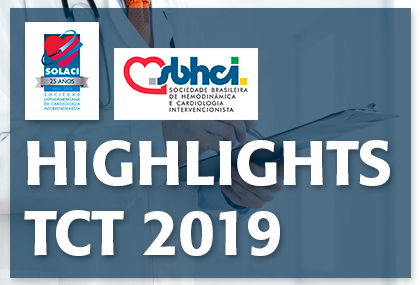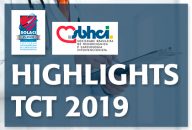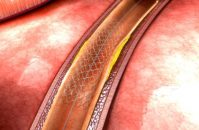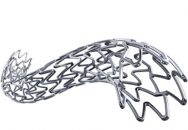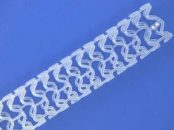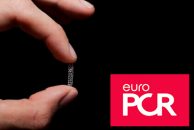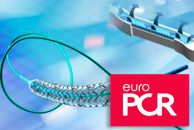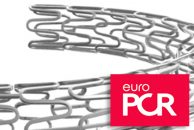Courtesy of SBHCI. This study tested the safety of dual antiplatelet therapy (DAPT) after only three months of bioresorbable polymer sirolimus DES implantation (Ultimaster). Secondary end point was following with P2Y12 inhibitor monotherapy after the first 3 months compared with aspirin. It included 1695 patients treated with sirolimus eluting Ultimaster receiving 3-month DAPT. After the…
TCT 2019 | EVOLVE Short DAPT: Only 3-month DATP in High Risk Bleeding
Courtesy of the SBHCI. This study used the thin strut everolimus eluting stent with ultrathin abluminal bioresorbable polymer coating chromium platinum stent, basically the Synergy stent. Drug release and polymer degradation within four months facilitate endothelization and would allow a shorter DAPT. Presented during the scientific sessions of TCT 2019, this study included 2009 high…
TCT 2019 | IDEAL-LM: Bioabsorbable Polymer DES vs. Permanent Polymer DES for Left Main Stenosis
Courtesy of SBHCI. This study showed that using the everolimus eluting stent with bioabsorbable polymer Synergy followed by 4 months of dual antiplatelet therapy (DAPT) to treat left main stenosis (LMS) was safe and effective, compared against using the everolimus eluting stent with permanent polymer Xience followed by the conventional 12 months DAPT. This study…
TCT 2019 | Onyx ONE: Durable Polymer vs. Polymer-Free Stent with Only One Month of Dual Antiplatelet Therapy
Courtesy of the SBHCI. This is the first randomized study comparing a durable-polymer drug-eluting stent (zotarolimus-eluting stent Onyx) and a polymer-free drug-eluting stent (biolimus-A9-coated stent BioFreedom), with only one month of dual antiplatelet therapy in patients at high risk for bleeding. Onyx ONE was a study conducted at 84 sites that randomized 1:1 2000 total patients at…
Do Polymers Play any Role in Drug Eluting Stents
The fact that polymers can degrade after drug release seems interesting, more so when there appears to be evidence that they might cause inflammation (manly eosinophil infiltration) given its unwanted consequences. However, nice theories often get a reality check, and the polymer discussion is no exception. This article, soon to be published in J Am…
Thin, Very Thin, and Ultrathin Struts, with Permanent or Biodegradable Polymer… Which Is the Best Combination?
Results from the BIO-RESORT trial at three years, soon to be published in JACC Intv., show that, despite significant differences among stents as regards strut thickness and capability to reabsorb the polymer, there are no apparent safety or efficacy differences among devices. The aim of this study was to determine the three-year safety and efficacy…
Theoretical Advantages Translated into Worst Clinical Outcomes: Synergy vs. Xience
New data from a real-world registry soon to be published in J Am Coll Cardiol Intv suggest that Synergy (a thin-strut everolimus-eluting stent with a biodegradable polymer) is associated with a higher risk of acute stent thrombosis when compared with classic Xience (a thicker-strut everolimus-eluting stent with a durable polymer). At 12 months, there was…
DES with Bioresorbable Polymer vs. Bare Metal Stents in Primary PCI
Long after myocardial revascularization guidelines had established no medical reason justifies the use of bare metal stents (BMS), along comes this study to refresh the old trials comparing drug eluting vs bare metal stents in the context of primary PCI. The problem for many countries is that primary PCI obviously occurs in the context of…
EuroPCR 2019 | MeRes-1: Bioresorbable Scaffolds Return with Renewed Strength
A small number of highly selected patients presents good outcomes with new bioresorbable scaffold MeRes, but much more evidence is necessary to bring back the concept. The MeRes-1 study tested the newest generation of the Meril Life Sciences bioresorbable scaffold, a device featuring thinner struts compared with Absorb (from 150 µm in Absorb to only…
EuroPCR 2019 | Stent Firehawk Continues to Show Good Results at 2 Years vs. Xience
This device, an abluminal groove-filled biodegradable-polymer sirolimus-eluting stent manufactured in China, showed very similar efficacy and safety to the “gold standard” everolimus eluting Xience at 2-year follow up, according to the TARGET outcomes, presented yesterday at the EuroPCR 2019 and simultaneously published in J Am Coll Cardiol Intv. The device, which is manufactured in China…
EuroPCR 2019 | BIO-RESORT and SCAAR Registry: Ultrathin Struts Also in Small Vessels pequeños
Data from randomized studies are also supported by the SCAAR registry, in which ultrathin-strut stents show real-world advantages. Patients with small vessels who received ultrathin-strut stents are less likely to undergo revascularization at 3 years than those who received first-generation thin-strut devices, according to the BIO-RESORT trial, presented during the first day of the annual…
